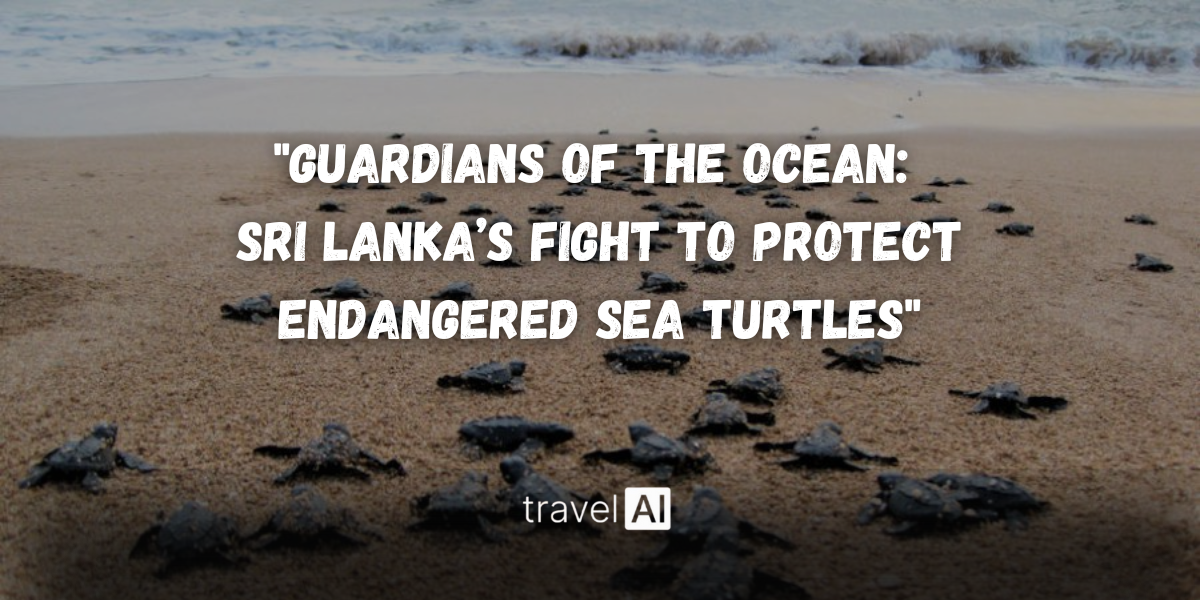Sri Lanka’s pristine beaches are not only a tropical paradise for tourists but also serve as vital nesting grounds for five of the world’s seven sea turtle species: green, olive ridley, loggerhead, hawksbill, and leatherback turtles. Recognizing the importance of these ancient mariners to marine ecosystems, several conservation initiatives across the island have been established to protect and rehabilitate sea turtle populations.
Turtle Hatcheries: Guardians of the Next Generation
Turtle hatcheries play a pivotal role in safeguarding sea turtle eggs from natural predators and human threats. By relocating eggs to protected environments, these hatcheries ensure higher survival rates for hatchlings.
- Kosgoda Sea Turtle Hatchery: Established in 1981 by the Wildlife and Nature Protection Society, this hatchery focuses on the conservation of sea turtles indigenous to Sri Lanka. Visitors can learn about the life cycle of turtles and participate in the supervised release of hatchlings into the ocean.
- Sea Turtle Hatchery in Habaraduwa: This sanctuary not only protects turtle eggs but also cares for injured adult turtles. Guests can observe hatchlings and, for an additional fee, partake in releasing them into the sea during early mornings or evenings.
Participating in Ethical Turtle Releases
For those interested in witnessing or participating in turtle releases, it’s crucial to engage with organizations that prioritize the well-being of the turtles:
- Turtle Watch Rekawa: Situated in Rekawa, this project offers visitors the chance to observe nesting turtles in their natural habitat. Unlike some hatcheries, they do not relocate eggs unless absolutely necessary, promoting natural nesting behaviors.
- The Pearl Protectors’ Turtle Patrol: This youth-led marine conservation organization conducts annual patrols to protect nesting sites from poachers and other threats. Volunteers can join patrols to ensure the safety of nesting turtles and their eggs.
Best Practices for Turtle Releases
If you have the opportunity to participate in a turtle release, consider the following guidelines to ensure the experience is both ethical and beneficial for the turtles:
- Choose Reputable Organizations: Engage with conservation programs that prioritize turtle welfare over tourism. Ensure that the organization follows ethical practices, such as not handling turtles unnecessarily and releasing hatchlings at appropriate times.
- Avoid Direct Handling: While it might be tempting to hold a hatchling, it’s best to allow them to make their own way to the ocean. This natural journey strengthens their muscles and imprints the location, which is vital for females that will return to the same beach to nest.
- Participate During Optimal Times: Turtle hatchings and releases typically occur at dusk or dawn to minimize exposure to predators and reduce temperature-related stress.
Sri Lanka’s commitment to sea turtle conservation offers visitors a unique opportunity to engage with these magnificent creatures responsibly. By supporting ethical conservation programs and participating in mindful release practices, we can ensure that future generations will continue to marvel at the sight of sea turtles gracing Sri Lanka’s shores.
Sources:
- Sri Lanka Tourism Development Authority (SLTDA) – www.sltda.gov.lk
- United Nations Development Programme (UNDP) Sri Lanka – Marine Conservation Efforts – www.undp.org/srilanka
- National Aquatic Resources Research and Development Agency (NARA) – www.nara.ac.lk
- The Pearl Protectors (Sri Lanka’s Marine Conservation Organization) – www.thepearlprotectors.org
- World Wildlife Fund (WWF) – Sri Lanka Marine Conservation Projects – www.wwf.org
- IUCN Sri Lanka – Marine Ecosystem Conservation Reports – www.iucn.org/srilanka
- Turtle Conservation Project (TCP) Sri Lanka – www.tcpsrilanka.org

